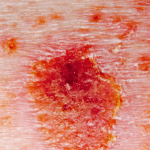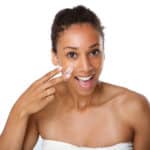What Are the Top 5 Teen Skin Problems, and How Can a Dermatologist Help Solve Them?
Teens really are quite amazing, considering they’re dealing with the pressures of school, sports, friends, navigating the new dating world and handling their jobs and at-home responsibilities. And in the middle of all of this action and anxiety is one of the greatest stressors of all: teen skin issues. If your teen is dealing with acne, he or she has to face every day wishing for a different, better, flawless face, and perhaps shrinking away from his or her full potential.
Even a teen with excellent self-esteem can get ground down by school bullies focused on their target’s skin issues.
As a parent, you’re surely attuned to your child’s health and personal concerns. But since teens are notorious for playing down or hiding their concerns, it can help if you’re aware of the top teen skin issues – which you might not fully notice otherwise, especially in cases like excess sweating . You’ll save the day by informing your child that your dermatologist can help make their skin issues better.
Here are the top 5 teen skin issues:
Teen Skin Problem 1: Acne
As teens grow, their bodies and hormones change. When hormone levels rise, teens’ skin can react in a number of ways. It might be the start of the occasional pimple popping up here and there, or it might be far more than a breakout, with the chronic condition acne generating teen acne, with all of its whiteheads, blackheads and pus-filled bumps, far from the smooth, flawless face teens want. Teens’ cheeks and forehead are the most common spots for teen acne, but the jawline is also a top spot for teen acne to occur.
Often, the teen and parents seek out over-the-counter acne treatment containing benzoyl peroxide and other medications, but the most common result is that the OTC acne medication stops working after a short time, and an attempt with another over-the-counter teen acne medication might yield the same results. In the meantime, if your teen has picked at his or her pimples or acne spots, infection or scarring might occur.
It’s far more advisable to visit with your teen’s primary care physician and a board-certified dermatologist with experience in treating teen acne, to get a professional-strength prescription medication for teen acne, plus perhaps an antibiotic prescription. While at the dermatologist, your teen can learn about other types of treatments for teen acne, such as laser treatments for acne, microdermabrasion to treat acne, chemical peels to treat acne and other possibilities tailored to your child.
Teen Skin Problem 2: Oily Skin
When a teen’s skin reacts to hormones, one of the possible results is having skin that is too oily. This may or may not result in pimples or teen acne, but either way, teens don’t want an ultra-shiny face.
Visit with your dermatologist for an assessment of your teen’s oily skin condition, and to explore treatments for oily skin. Medications could treat a mild to moderate oily skin problem, and in more extreme cases, an FDA-approved laser treatment called Aramis could ‘dial down’ your teen’s oil gland activity for an extended period of time, calming oil production. Be sure to advise your child not to over-wash his or her face, thinking it will clear away all the oils. The skin needs some protective oils, and over-stripping them will do more harm than good.
Teen Skin Problem 3: Eczema
Eczema appears as patches of dry, scaly, red skin, which may occur in children and teens who play sports, when their skin is aggravated by sporting equipment. For instance, eczema can occur on knees or ankles where sports gear rubs them a lot during a game and practices.
Talk to your dermatologist about treatments for eczema in teens, to get a quality prescription medication and advice on how to help prevent this problem in the future.
Teen Skin Problem 4: Warts
Teens may tend to hide this one from you, thinking that a wart on his or her hand or feet is too embarrassing, but when you learn of your teen’s wart occurrence, it’s time to head to the dermatologist for an assessment, and to get wart treatments appropriate for teens. Warts are caused by a virus, and to help your child be free of embarrassment over his or her warts, you may agree with your dermatologist that a safe procedure of freezing off warts is a smart solution to help your child feel better right away.
Teen Skin Problem 5: Excess Sweating
When teens sweat through their clothes – even just once, as well as on a regular basis – they can be a target for teen bullies. Teens don’t want to be known for being ‘the one who sweats a lot’ when they’ve worked so hard in school to be known for their strengths and values.
So if your teen is experiencing extra sweating under the arms, as well as on their palms, the soles of their feet, their scalp, chest or anywhere on their body, this may be a condition known as hyperhidrosis, which may affect teens, not just adults. Your dermatologist can help create a solution, such as using safe, FDA-approved Botox to treat teen sweating. You might also add in an absorbent inner shoe sole for your teen’s feet, and breathable cotton clothing over synthetic fibers, and you’ll help your teen lessen or avoid embarrassing sweating issues.





